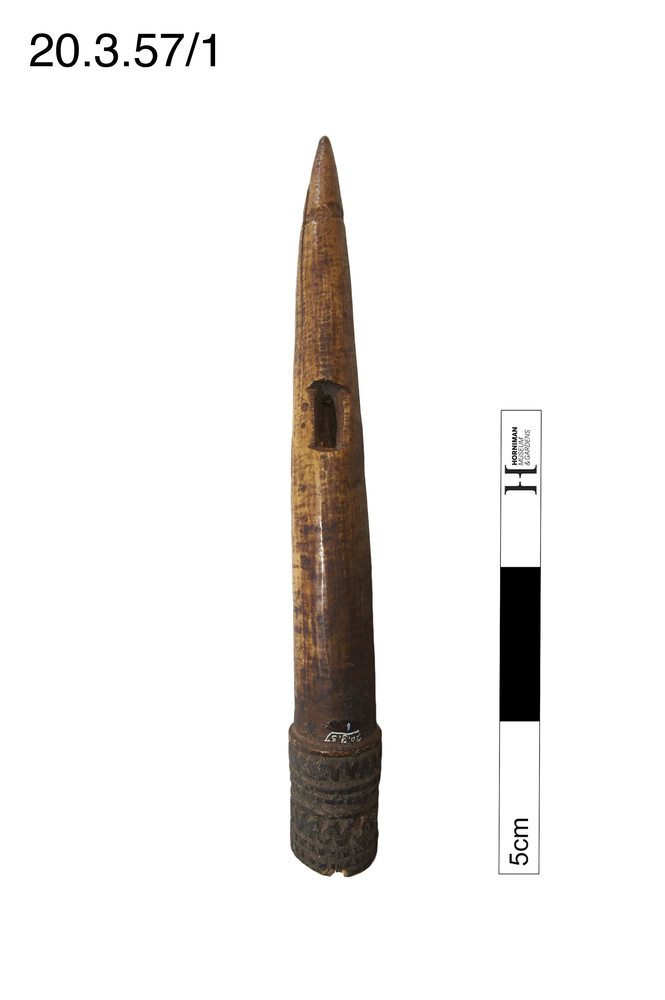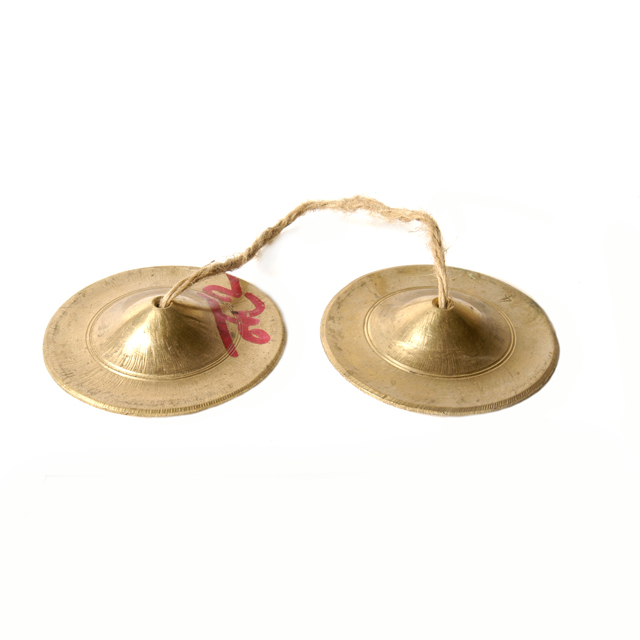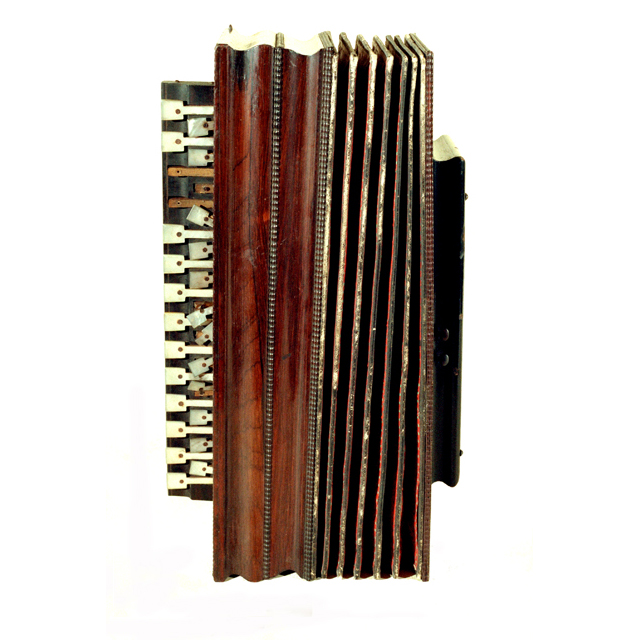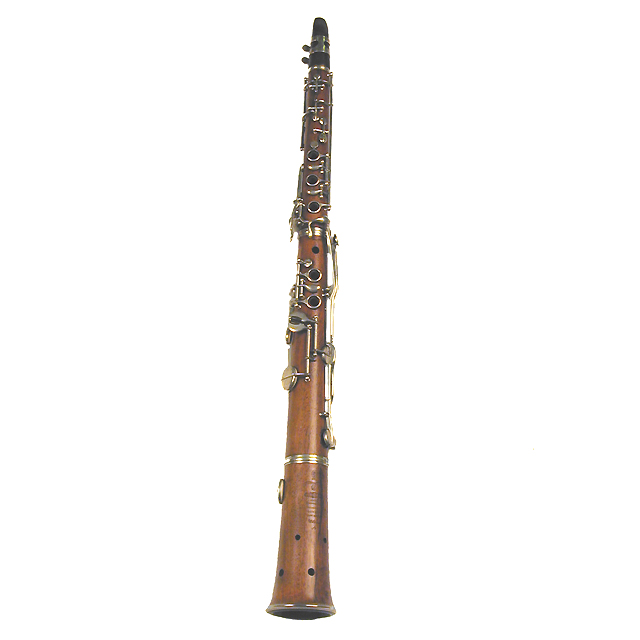
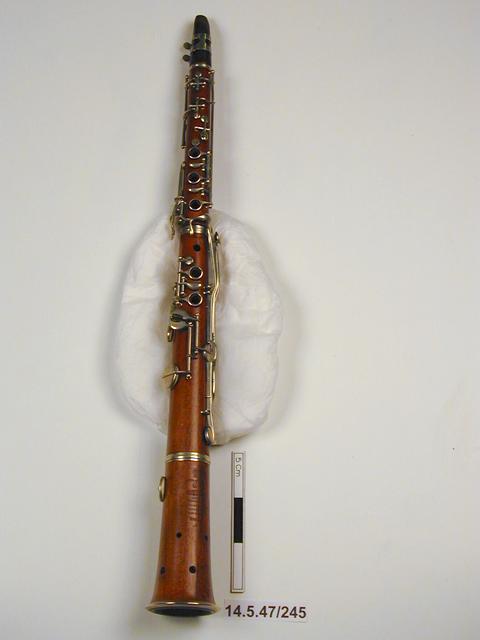
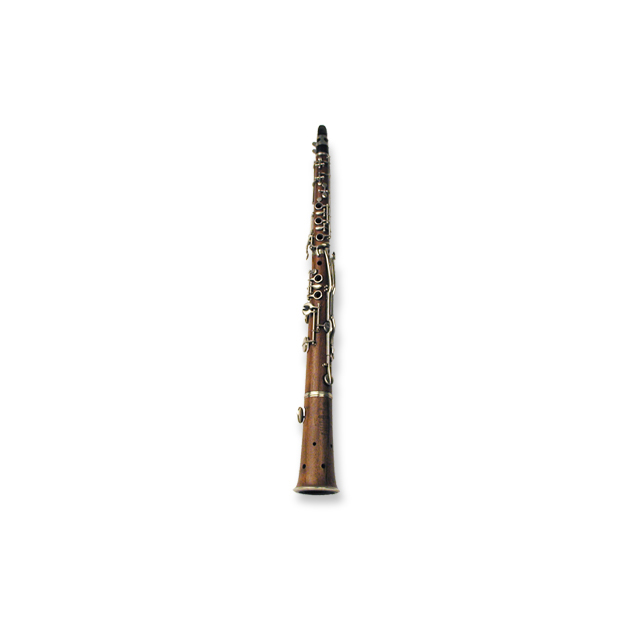
Tárogató in B flat, medium brown wood, bleaching on the face. Eighteen German silver keys (including rings) of modern design. Rollered little finger keys. Low B flat key for right thumb. Two rows of tuning holes in base. Wooden mouthpiece is original. Sounding length (length without mouthpiece) is 67.6 cm. Long keys for left fourth finger are bent. Mouthpiece tenon chipped externally. Stamped: Jérome Thibouville-Lamy 13 Charterhouse Street, E.C. London (marked: Made in Paris; and Class A).
The tárogató was originally a loud double reed instrument of the shawm family. It was played outdoors and used as a military signal instrument. Because of its association with struggles for independence, Hungarians adopted it as a symbol of freedom. This version of the tárogató was developed by V. J. Schunda in the late 19th century, and uses a single reed. Its softer sound has encouraged some composers to use it in the orchestra. It is a popular folk instrument in Hungary and is sometimes used in klezmer bands.



